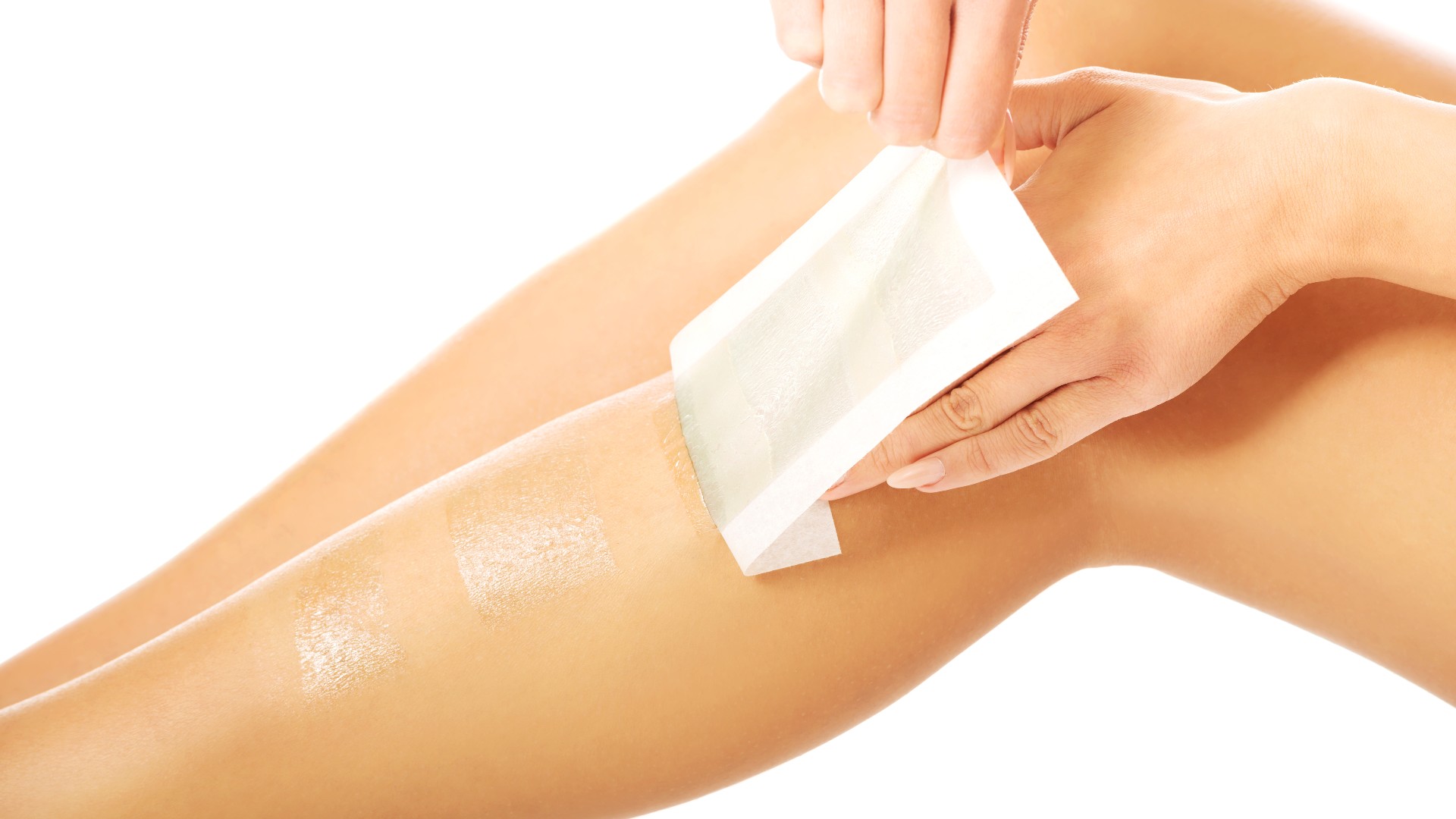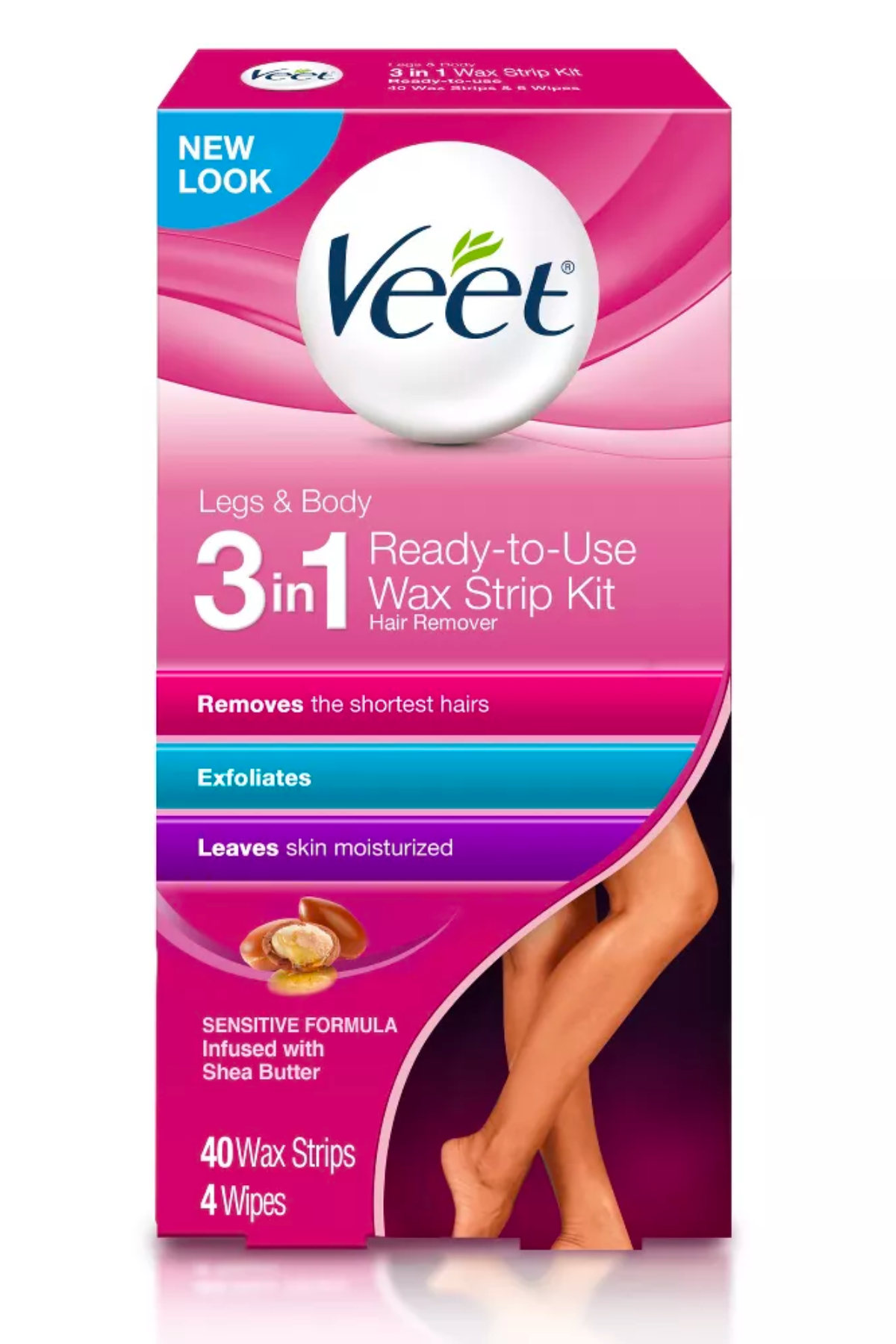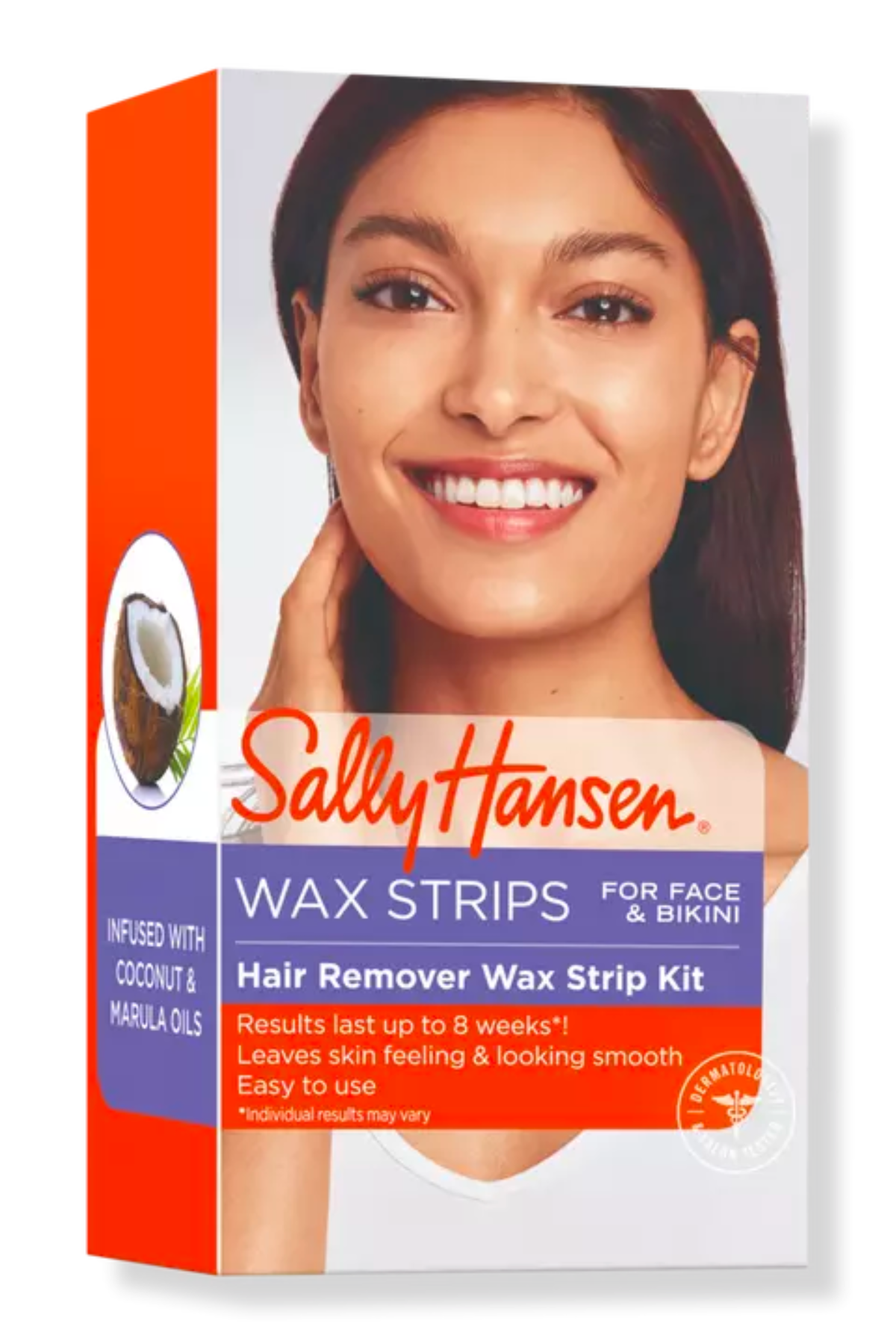How to Wax Your Legs at Home, According to a Dermatologist
Yes, you can do it safely—you just need to know how.


So, you've decided to wax your legs. Or at least you're considering waxing your legs, but you don't know where to start. Waxing sits right in the middle of the at-home hair removal spectrum: You have at-home laser hair removal devices on one end—which promise long-lasting results but are often the most painful—while shaving sits on the other end: least painful, easiest to do, but with results that don't last. Waxing your legs at home with a waxing kit or strips is a great option if you're looking for results that last for a few weeks, but it requires a little know-how about preparation, aftercare, using wax strips, and more. So, I turned to a dermatologist to break down exactly how to wax your legs at home.
Deciding how to remove your hair is your business and your business alone. If you're still unsure about which method is right for you, check out Marie Claire's guide on the differences between waxing and shaving. It contains everything you need to know, from the best razors on the market to which method is actually easier. If you've decided that waxing your legs is what you want to do, keep reading for Dr. Lal's step-by-step breakdown, ahead.
Is Waxing Your Legs at Home Safe?
Here's the good news: Yes, waxing your legs at home is generally safe. However, there are risks associated with it that you should be aware of before we jump into step-by-step directions.
"I have seen awful scars from waxing. This is usually from ripping skin with waxing," says Dr. Karan Lal, a Double Board certified adult and pediatric dermatologist and fellowship-trained Cosmetic dermatologist at Affiliated Dermatology in Scottsdale, Arizona.
Using at-home waxing kits that don't require you to heat up your own wax is a great way to avoid burning the skin. Making sure that you don't go over the same area more than once is another great way to avoid irritation or burns.
How Long Should The Hair Be On Your Legs?
You need your hair to be "1/4 to 3/4 inch is the sweet spot," says Dr. Lal. Think of it as roughly as long as a grain of rice. Any longer and the wax strip might break the strand without pulling it out from the root. Any shorter and the wax may not be able to grab hold of the individual strands.
How to Wax Your Legs at Home
While Dr. Lal lays out a pretty easy-to-follow routine, below, it's important that you read (and re-read) the directions on your specific kit. Every kit is different and their directions can vary. Checking with your dermatologist or another professional is another great way to make sure you're on the right track. Or, book an appointment with a specialist at a wax salon for your first time to get some IRL tips.
Get exclusive access to fashion and beauty trends, hot-off-the-press celebrity news, and more.
- Wash Your Legs Before You Start: "Immediately before waxing, wash your legs with antibacterial cleanser," says Dr. Lal. This will make sure that the skin is clean. Make sure that your skin is totally dry before continuing.
- Apply The Wax Strips: As with shaving with a razor, you should apply "wax or strips on the hair-bearing areas in direction of hair growth," says Dr. Lal. Make sure to smooth the strip firmly onto the area of your legs that you want to shave for the best results.
- Remove The Strip: Pulling the strip in one fluid motion is the easiest and fastest way to do this, even though it can be a bit painful. Dr. Lal says that you should pull the strip "parallel to skin" rather than pulling directly up for the best results.
The Best At-Home Waxing Kits
Pre-Care Tips
To make sure your skin in tip-top shape for waxing, Dr. Lal says to make sure that you "do not exfoliate or self tan your legs before waxing." Make sure to avoid shaving immediately before you use the kit "as this can make it harder for the wax to pull the hairs," he says.
Aftercare Tips
Hydration is the name of the game after you wax your legs at home. "Moisturize right away," says Dr. Lal. He also recommends that you "don’t exfoliate for two or three days. Avoid hot baths or showers immediately after." Check out our guide to the best body creams if you're in need of a new one.
Meet The Expert

Originally from New York City, he grew up in Queens and attended Hunter Science High School in Manhattan. He graduated summa cum laude from the New York Institute of Technology, where he completed a rigorous seven-year accelerated combined medical program. He was selected to be an academic medical scholar, during which he received a Master of Science in neuroscience and a scholarship for three years of medical school and graduate training. He was elected to the Sigma Sigma Phi and Psi Sigma Alpha medical honor societies. He completed his internal medicine internship at the University of Connecticut Medical Center where he was elected intern of the year. He completed a three-year dermatology residency at the University of Massachusetts, where he was elected chief resident. He continued at the University of Massachusetts to complete a pediatric dermatology fellowship, where he gained an interest in vascular anomalies, pediatric laser, and dermatologic surgery of pediatric patients. Dr. Lal specializes in pediatric and adult dermatology, laser surgery, soft tissue filler augmentation, body sculpting, melanocyte keratinocyte transplant surgery for vitiligo and hypopigmentation, pigmentary abnormalities of the skin and enjoys treating patients from birth onwards. He is an expert in atopic dermatitis, vitiligo, melasma, psoriasis, and hidradenitis and has worked in specialty clinics among experts. He is the only board-certified pediatric and fellowship-trained cosmetic dermatologist in the country.

Julia Marzovilla is the Fashion E-Commerce Editor at Marie Claire, where she reviews the latest launches from fashion and beauty brands, finds the best on-sale items around the internet, and interviews experts to find the best products in any category to share with her readers. She also creates shopping guides that span every vertical on the site as an expert in everything from the best laptop bags to the best laser hair removal devices.
In her near decade of experience, Julia has both written for several top outlets in the E-Commerce space and worked at major fashion labels. Prior to joining the Marie Claire team, she contributed similar shopping stories to sites such as Bustle, InStyle, The Zoe Report, Who What Wear, and worked as the Trending Fashion and News Writer STYLECASTER. You can find her across the internet at @JuliaMarzovilla. In real life, you can find her creating shopping guides for her friends, cooking or baking in her too-small kitchen, or buying tickets for the next time Harry Styles is in town.
Julia has a Bachelor’s degree in English with a minor in Journalism from Loyola Marymount University in Los Angeles, California. She lives in New York City, her hometown.

